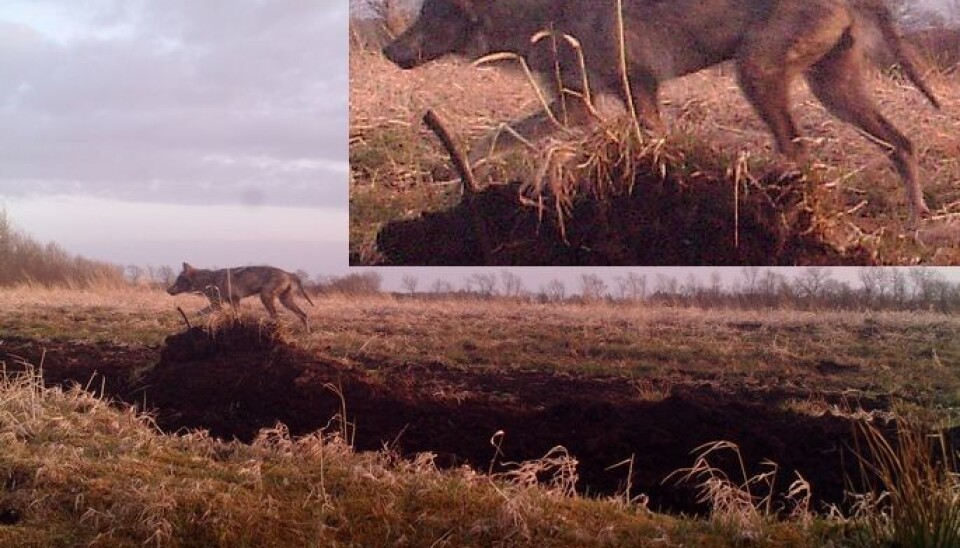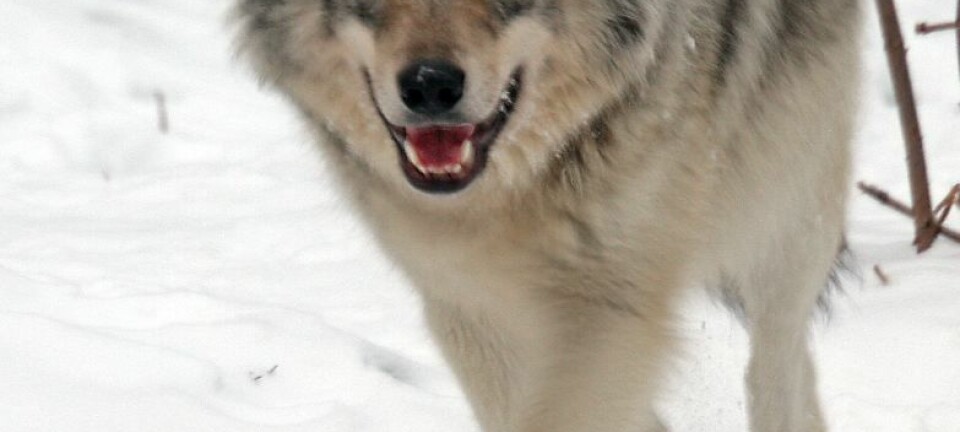
Wolves with mange can heal themselves
Mange parasites can force humans, foxes and even wolves to scratch their skin into pieces. For foxes this can be fatal, but wolves are hardier.
Last month, camera traps in a Danish village caught a wolf with clearly visible fur loss on its tail, which may be caused by mange.
For foxes, mange is a miserable experience that often ends in death, and many people in Denmark insisted that the wolf should be shot immediately to end its misery.
However, recent studies have shown that wolves, thanks to an extremely effective immune system, are much less affected by mange than most other animals, and experience shows that wolves often survive the disease and start growing fur again on the bald spots.
Experts assessed the Danish wolf
The photograph above was taken in the Danish village of Ilskov, which is why I have decided to name it ‘the Ilskov wolf’.
For an expert assessment, I sent the photo to nine wolf researchers from Norway, Germany, Italy, Spain and the US, all of whom have experience with wolves suffering from mange.
Three of these, including one of the world’s leading wolf experts, Luigi Boitani, and wildlife veterinarian Jon M. Arnemo, who is currently conducting a major study of diseases in wolves in Norway and Sweden, say that the Ilskov wolf may suffer from mange but they add that it is impossible to say anything with certainty based on the picture alone.
When, in late spring, wolves shed their thick winter coat, they sometimes look motheaten and the tail can be quite thin-furred.
Five experts say the wolf has scabies
But five of the experts, including Álvaro Oleaga and Mike Jimenez, who have extensive experience with scabies-affected wolves in Spain and the US, respectively, believe it looks as if the Ilskov wolf is suffering from mange.
Jimenez writes that the fur loss on the tail is highly characteristic of wolves with mange. Two of the Italian wolf researchers, who have monitored wolves fitted with radio-tracking collars, say that the Ilskov wolf appears to be recovering from mange.
In all the five countries mentioned above, wolves are known to have survived mange. There are also many cases of mange-affected wolves where the fur grew back on the bald spots within a couple of months.
Wolf cubs are particularly vulnerable to mange and they usually die from it. But new observations reveal that even the young generation can resist the disease. German wolf researcher Ilka Reinhardt reports that they have observed two wolf packs with mange symptoms this winter, of which some of the big cubs were almost entirely furless. But they appear to be recovering now.
Humans can get mange too
It is not uncommon for wolves to get mange. It is a common skin disease observed in more than 100 species of mammals, including domestic animals and humans (we call it the seven-year itch).
The disease is caused by the parasitic mite Sarcoptes scabiei, which burrow under the skin of its host, resulting in severe itching and hair loss. Some animals, including the fox, react so strongly that not only do they start dropping their fur; they also develop thickened, chapped and grayish skin with scabs and inflammation covering many parts of their bodies.
Animals that have this severe reaction usually end up dying as a result of dehydration, emaciation and/or the cold.
However, there is another, much milder type of reaction to mange, which the wolf gets, thanks to its well-functioning immune system. The wolf’s primary reaction to mange is itching and fur loss.
The wolf’s effective way of keeping mange at bay can be seen in the extremely low number of mites in affected individuals. Foxes suffering from mange can have many thousands of mites on their bodies. In comparison, having examined nine mange-affected wolves, Spanish researchers found only 1-78 mites on their entire bodies.
Holes in the winter coat can kill
The greatest threat to mangy wolves is the cold. If they get mange in winter and holes start to appear on their otherwise extremely well insulated winter coat, they can freeze to death.
This happens to a high percentage of mangy wolves during harsh winters in the US. They do, however, survive the mild winters.
For the same reason it is also fair to assume that mangy wolves are more likely to survive in areas with warmer climates, such as Spain and Italy, than in the cold North. But even in Sweden and Norway many wolves survive mange, writes Arnemo.
-----------------------------
Read the Danish version of this article at videnskab.dk
-----------------------------
Read the Danish version of this article at videnskab.dk
Translated by: Dann Vinther
Scientific links
- "Parasite invasion following host reintroduction: a case study of Yellowstone's wolves", Philosophical Transactions of the Royal Society B (2012)
- "Sarcoptic mange found in wolves in the Rocky Mountains in western United States", Journal of Wildlife Diseases (2010)
- "Comparative pathological and immunohistochemical features of sarcoptic mange in five sympatric wildlife species in Northern Spain", European Journal of Wildlife Research (2012)







